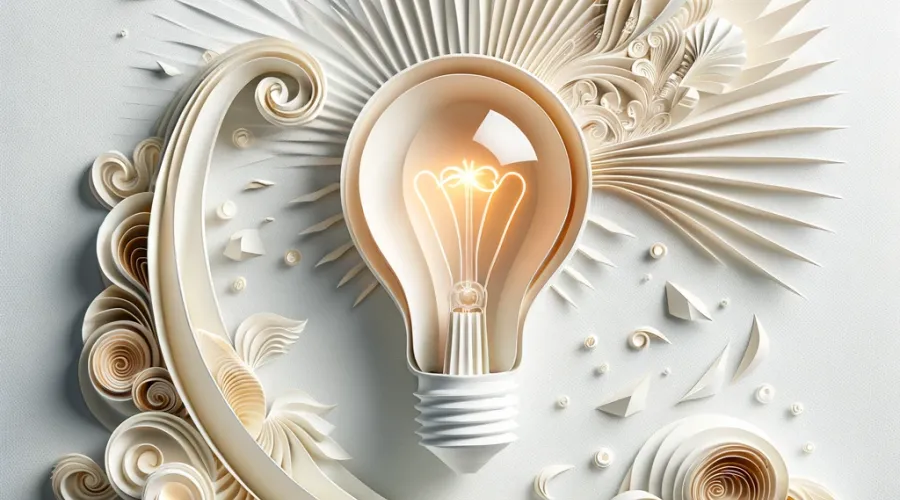
The art of patience: mastering time for better creative thinking
Have you ever felt that rush of excitement when you’re handed a new design brief? That sense of eager anticipation mixed with a dash of creative anxiety as you ponder over where to begin? If you’re nodding along, then welcome to the club. You see, there’s this peculiar phenomenon I’ve noticed over my two decades as a creative professional, and it’s something that consistently emerges, no matter the project at hand. It’s about the journey of creative thinking from initial concept to final masterpiece, and the surprising role patience plays in this process.
Let me take you on a little field trip, a kind of behind-the-scenes tour of the creative process, if you will. It starts with a design brief landing on my desk. Now, you’d think after 20 years, I’d just dive straight in, right? Whip up a logo, sketch out a website design, or craft a brand strategy in no time. And sure, I could do that. In fact, sometimes I do. But here’s the kicker: the real magic, the kind that makes you lean back in your chair and go, “Wow, did I just create that?” happens under a different kind of tempo. It’s what I like to call the slow burn.
The Slow Burn of Creative Thinking
This slow burn during the creative design process isn’t about dragging your feet or procrastinating (though, let’s be honest, we’ve all been there). It’s about giving yourself permission to sit with the brief, to marinate in the problem, and to let your ideas simmer and evolve. In the world of instant gratification, where deadlines loom like thunderclouds and clients are itching for quick fixes, advocating for patience in creativity might seem, well, a bit out of place. But bear with me.
The Case for Patience
Over the years, I’ve learned something vital: good designs, the kind that resonate and endure, require patience. Not just with the process, but with yourself. It’s about allowing yourself the time to refine and improve a composition, to tweak a logo until it sings, to strategise a brand’s identity until it feels just right, or to polish a website design until it shines.
You see, creativity is not a faucet you can just turn on and off at will. It’s more like a river that needs to meander, to find its course. Sometimes, it flows freely; other times, it hits a snag. But given time, it always finds its way. And this is where patience becomes your ally in the creative process.
Expanding on the metaphor of creativity as a meandering river, there are also loads of creative thinking strategies that will help that river to flow, especially when it hits a snag. These strategies are like the tools we use to gently guide the river along its course, helping it navigate through obstacles and expand its banks to explore new territories.
One such strategy is lateral thinking, a technique that encourages looking at problems from new angles, often leading to unexpected and innovative solutions. It’s akin to finding a new tributary for our river to explore, one that might initially seem unrelated but ultimately leads to a richer, more diverse creative landscape.
Another useful approach is the SCAMPER technique, which stands for Substitute, Combine, Adapt, Modify, Put to another use, Eliminate, and Reverse. Each of these verbs offers a different way to approach a creative block, encouraging us to rethink and reframe the elements of our design, pushing us to think outside the box and discover novel solutions.
Mind mapping is yet another tool in our arsenal, allowing for the visual organisation of thoughts and ideas. It’s like creating a map of the river’s potential paths, helping to clarify the direction of flow and uncover connections between seemingly disparate ideas. This strategy fosters a free-flowing exploration of concepts, making it easier to navigate the creative process.
Lastly, embracing constraints can paradoxically free our creativity. Limitations, whether in time, resources, or specifications, can force us to be more inventive, finding ways for the river to flow despite barriers. It’s a reminder that creativity thrives not just in open, unbounded spaces but also within the confines of a challenge.
In our upcoming post, we’ll delve deeper into these strategies and more, exploring how they can help us think outside the box and guide our creative river to its fullest potential. These approaches, combined with the patience to let our creativity unfold naturally, ensure that the creative process is not just about reaching a destination but also about enjoying the journey and discovering the wealth of ideas that lie just beyond the familiar banks.
The Creative Epiphany
Now, back to that design brief. After allowing the initial ideas to percolate, something crazy happens. You go over the brief, the problem, the task again and again. And then, suddenly, it all falls into place. It’s as if all the pieces of the puzzle you didn’t even realise were scattered suddenly come together to form a coherent, beautiful picture.
This moment, this creative epiphany, is what every designer lives for. It’s the culmination of all your experience, your skill, and, yes, your patience, coming together in a moment of pure clarity. It’s the realisation that good things really do come to those who wait, who ponder, who refine, and who dare to revisit the drawing board as many times as it takes.
The Value of Experience
Now, you might be wondering, does experience speed up this process? The answer is yes and no. With experience comes a certain level of efficiency, a knack for identifying potential solutions more swiftly. However, the quest for that breakthrough idea, the one that elevates your design from decent to extraordinary, remains a journey. And it’s a journey that cannot be rushed.
Experience has taught me that while I can produce something relatively quickly, the depth, the nuance, and the impact of my work significantly improve when I allow myself the luxury of time. Time to question, to explore, to experiment, and to ultimately uncover the best solution hidden within the brief.
I know that the reality of deadlines, budgets and client expectations isn’t always your friend when it comes to slowing down, but it’s worthwhile explaining to clients why some things take longer than others, and what the merit of giving a project the time it deserves is in relation to the ROI. I feel fortunate to work with professionals that understand this but it wasn’t always like this. I have probably lost some clients over it over the years who were looking for quick fixes rather than complete solutions, but it did mean that I can focus on those clients and projects that are ultimately far more exciting and long-lasting. It’s a two way street… It’s the client commissioning you, but it’s also you giving your talent to a client. Don’t undervalue that.
Embracing the Process
So, to my fellow creatives, whether you’re just starting out or you’ve been in the game for years, embrace patience. Embrace the slow burn of creativity. Allow yourself the space to explore, to fail, to learn, and to grow. Remember, great design is not just about the end product; it’s about the journey you take to get there.
In a world that often values speed over substance, especially with the rise of AI tools for content creation, choosing to take your time might seem counterintuitive. But trust me, the results speak for themselves. When you give yourself permission to slow down, to let your creative juices flow at their own pace, you unlock a level of creativity and innovation that quick fixes can never achieve.
The Takeaway
I hope you’re feeling inspired to approach your next project with a newfound appreciation for the role of patience in design. Remember, it’s not just about crossing the finish line; it’s about enjoying the ride, learning from the detours, and ultimately arriving at a destination that’s truly worth the journey both for you and for your client.
So, the next time you’re handed a design brief and feel the pressure to deliver quickly, take a moment. Breathe. Reflect on the power of patience and the incredible potential it holds to transform your creative work. Trust yourself and your education, your talent and your experience that things will fall into place, the picture will be completed and you will solve the brief.
Good things—no, great things—come to those who wait. And in the realm of creative design, patience is, without a doubt, a virtue worth cultivating.

Regine Wilber
I am a brand consultant and conceptual designer. I love using creativity to solve problems for our clients. In my spare time, I like jigsaws and probably a bit of a board game geek.















